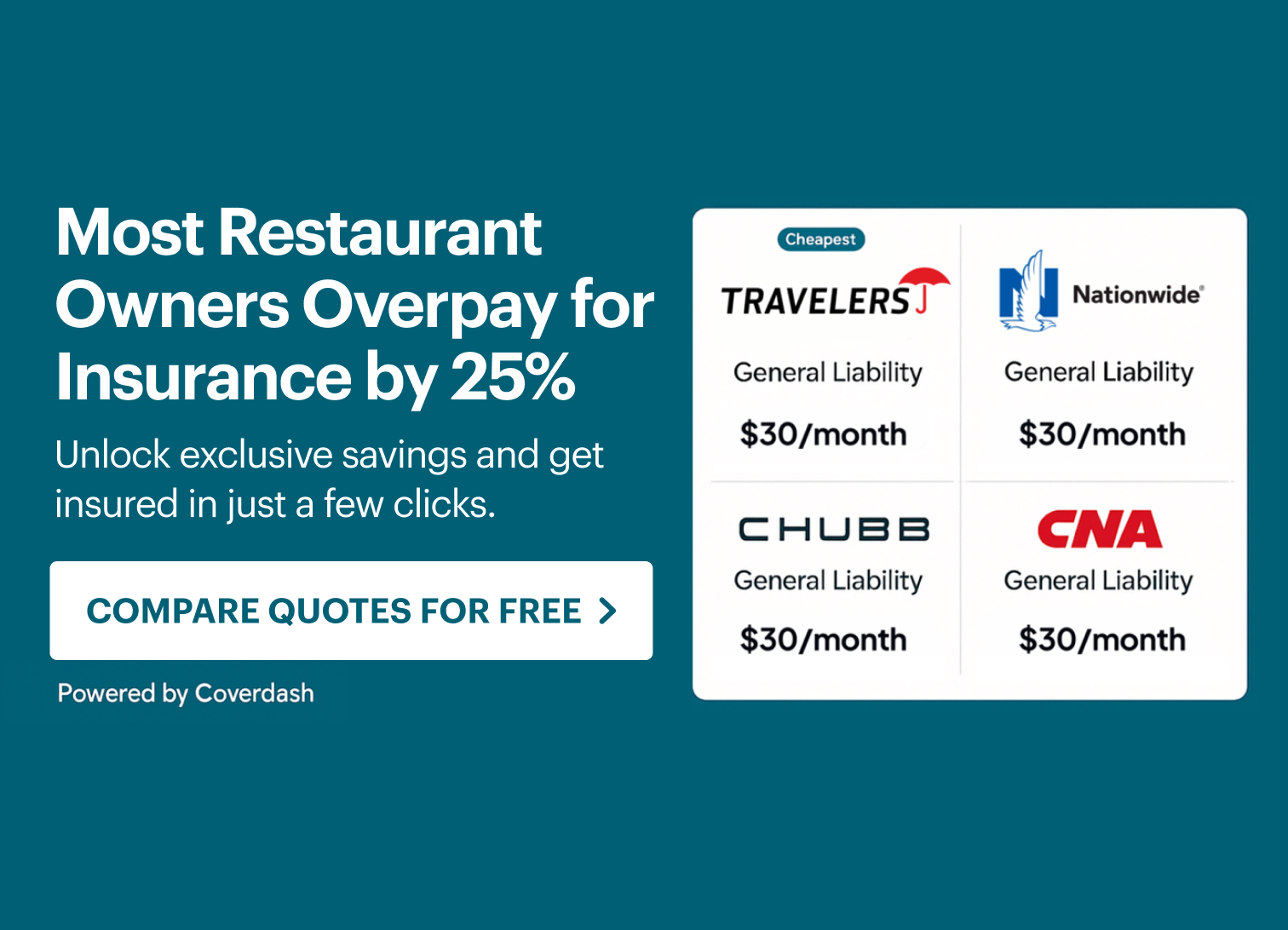We make financial transactions every day. From the purchase of our morning coffee to our big screen TV, every card transaction we make is processed, recorded, and digitized.
We take for granted that a credit card purchase requires no more than a swipe, dip, or a sign, and we’re able to move on with our day in no less than a few minutes.
But have you ever stopped to think about what needs to happen for a credit card transaction to take place?
Payment gateways, processors, acquirers, and issuers all play a part in the execution of a financial transaction – and they all take a cut of each sale. So as a restaurant owner, you’ll need to understand who’s taking a cut and why.
This section will cover some of the broad strokes and some of the nitty-gritty credit card transaction, as well a number of restaurant payment methods. You’ll learn:
- Who’s involved in a credit card transaction
- How payments are processed
- The fees associated with credit card transactions
- Mobile payments and how they affect your restaurant
Let’s start with a definition of the players: these are all the parties involved in making a sale.

Parties Involved in Credit Card Transactions
Cardholder
Cardholders are consumers with credit cards used to purchase goods and services. They are approved by the issuer based on credit history.
Merchants
Merchants are business owners accepting payments in exchange for goods or services. (Heads up: this is you!)
Payment gateways
A payment gateway is used most often in the cases of online payments (e-commerce, online ordering, etc). It is the technology that links your customer’s financial institution to your business’ financial institution in cases where the payment processor does not act as both the processor and gateway.
ISO
The payment card industry defines an ISO as an organization or individual that is not an Association member (meaning not a Visa or MasterCard member bank), but which has a bank card relationship with an actual Association member. Such a relationship can involve various things, such as acquiring or issuing functions, soliciting new customers, arranging for terminal purchases or leases, providing customer service, soliciting cardholders, etc. An ISO is not always involved, and if they are, that’s an extra “piece of the pie” leaving the merchant’s pocket on each transaction.
Payment processor
Payment processors negotiate processing, setup, and equipment rates. They are also the ones to set up your merchant account. They act as a middleman between you and acquirers. They may also provide the technology and hardware that will allow your business to process the transaction. In most cases, the payment processor also acts as the gateway for the transaction (removing the need for an additional party to perform the gateway function).
Acquiring bank
An acquirer takes on the risk of credit card processing. The acquirer solicits, underwrites, and maintains your merchant account. In some cases they are the ones who provide the technology and hardware that will allow your business to process the transaction.
Payment network (or card brand)
Payment brand networks are credit card and debit card companies. Their job is to govern compliance policies pertaining to their payment cards, monitor processing activity, develop new products, and oversee the clearing and settlement of transactions.
Issuing bank
The issuing bank issues credit cards on behalf of card brands. They provide consumers with credit cards, send credit card statements, and offer consumers credit. The issuer is also responsible for card security.
How Are Payments Processed?
Now that you know who’s involved in processing credit card transactions, here’s how they work together to complete a purchase.
The process breaks down like this:
- When a customer uses their card at your restaurant, your payment processing device sends data to the acquiring bank via an online connection through the payment gateway.
- The acquiring bank then sends the credit card information to the payment network.
- The acquiring bank requests payment authorization from the issuing bank to clear the purchase. The authorization request includes the following information:
- Credit card number
- Card expiration date
- Billing address
- Card security code
- Payment amount
- The issuing bank validates the information and sends back the authorized information through the processor to the merchant.
- The transaction is complete.
- At the end of each day, the merchant closes their batch of credit card transactions. They are sent to the acquiring bank.
- The information from the batch is sent back to the payment network.
- The payment network forwards the approved transactional information to each issuing bank.
- Within 24–48 hours, the issuing bank transfers funds back to the merchant, minus an “interchange fee”.
- The payment network pays the acquiring bank and the processor their fees from the interchange fee pool.
- The acquiring bank credits the merchant’s account, minus a “merchant discount rate.”
Credit Card Processing Fees for Restaurants
There is a fee associated with almost every player involved in processing a credit card transaction. Payment networks, issuing banks, processors, ISOs, and gateways each take their cut of your final sales, leaving you with slightly less than what the customer paid. Here’s what you need to know about credit card processing fees for restaurants.
Transactional fees
Every time you run a transaction, fees are taken by the:
- Processor
- Issuing bank
- Payment network
- Gateway (if used in the transaction)
- ISO (if used in the transaction)
Specifically, interchange reimbursement fees are fees charged by the issuing banks and credit card networks. They represent a percentage of each transaction with an added per transaction flat fee (ex. 2.1% + $0.10). The percentage you pay will be determined by the volume of sales you have each month: the more you sell, the lower the transaction fees.
Flat fees
Your monthly credit card transactions will also incur some flat fees. These include:
- PCI fees for compliance with the Payment Card Industry Data Security Standard
- Annual processing fees
- Monthly minimum fees if you do not reach a certain amount of transactions per month
- Statement fees (avoid these fees by opting for online billing)
- IRS report fees
- Payment network charges
Incidental fees
“Incidental fees” are another way of describing chargeback fees, which your business would incur if fraudulent charges occurred at your restaurant.
Taking Payments
Now that you know how card payments are processed, you should know more about the debit and credit cards that are currently in circulation in the United States. These can affect the type of restaurant payment methods that you may potentially use.
Debit and credit cards have changed in recent years to allow for a higher level of security for consumers. Traditional cards use a magstripe to process payments, while newer cards – also known as “EMV cards” – use a chip to generate a new code every time the card is used. The result? Less credit card fraud and less liability for your restaurant.
Canadian consumers have been using EMV cards since 2008.
Here are four types of credit and debit cards currently in circulation in the United States.
Swipe and sign
Swipe and sign uses the magnetic stripe on a credit card; the customer swipes the card in the payment processing device and then completes the transaction by signing the receipt.
This payment option is the least secure option for consumers. Magnetic stripes store a “static” amount of data, meaning it’s easy to counterfeit.
Newer credit cards are issued with chips that produce a unique encryption code every time the credit card is used, making the information harder to replicate and therefore more secure.
Dip and sign
Dip and sign is used when consumers “dip” their chip cards into the slot underneath the credit card processor’s keypad. After the dip, the customer signs their name on the receipt to complete the transaction.
Chip and PIN
Chip and PIN – also known as an EMV card – has become the standard for payments almost everywhere in the world. The U.S., however, has been slow to adopt chip and PIN cards.
Chip and PIN is when the customer inserts their chip card and enters their PIN. The PIN is encoded into a chip on the card and verifies personal identification rather than a signature.
Tap
With contactless or “tap to pay” cards, payments are processed securely with a microprocessing chip inside the card, which generates a new encryption code every time the card is used – as opposed to chip and PIN, which does not generate a new encryption code. This method of payment is the most secure of the four, and it’s become the standard all over the world.
The U.S. is currently in the midst of adopting the technology – in fact, starting in April 2018, businesses will now be liable for the losses from fraudulent charges. Read more about EMV compliance for restaurants below.
Credit Card Fraud
In 2015, debit and credit card fraud in the United States reached $8.45 billion, accounting for almost two-fifths of the global total.
Taking payment has always been rife with the potential for fraud. Governments work diligently to equip physical money with “tells” to identify fake bills. With plastic money, the process is a lot more extensive.
In the past, when a fraudulent transaction was made, banks would be liable for the chargebacks; with the new EMV liability shift in effect since October 1, 2015 and enforcement beginning in April 2018, merchants will be liable to pay for chargebacks themselves.
Here’s what you need to know about the EMV liability shift and how you can prepare for it when opening your restaurant.
What Is EMV compliance?
Named after its original developers (Europay, Mastercard, and Visa), EMV technology enables debit cards and credit cards with embedded microprocessor chips that store and protect the cardholder’s data. The goal is to replace “magstripe” cards that are more vulnerable to fraud.
Also known as “chip and PIN” or “smart cards”, EMV-compliant payment cards are processed through an updated POS system and payment terminal that accepts chip cards – but your restaurant can still accommodate magstripe cards after upgrading.
Believe it or not, the U.S. is the world’s last major market to become EMV compliant. The goal of EMV compliance standards is to encourage banks and businesses to implement new technology that more effectively protects consumers from credit card and debit fraud.
EMV compliance for restaurants
Before the October 1, 2015 cut off, if a customer came into your venue and racked up a hefty bill using a fraudulent card, the bank would have absorbed the cost. Now, if you’re not EMV compliant with a chip card reader, also known as an EMV terminal, you’ll be liable for the losses from fraudulent charges and will be required to pay out of pocket.
The “chip it” shift is happening on the consumer side whether restaurants like it or not, meaning that diners are coming to expect the experience of paying for meals with their debit and credit chip cards. According to Mobile Payments Today, “The U.S. Payments Forum estimates that as of late March [2017], banks (as well as American Express and Discover) had issued some 600 million chip cards.”
In addition to chip cards, another trend is fast coming over the horizon: mobile payments. As consumers become more accustomed to new payment technologies, restaurants will soon be expected to accommodate mobile payments. Here’s what you need to know about this important wave of new technology.
Mobile Payments for Restaurants
There will be 6.1 billion smartphone users by 2020. While the adoption of mobile pay has been slow in the U.S., the standardization of performing transactions with your mobile phone is inevitable. Mobile payments for restaurants are part of many restaurant payment methods that are rapidly changing the industry.
Types of Mobile Pay
A mobile payment happens whenever a consumer has paid for a product or service through a smartphone. But mobile payments exist in many forms, and there isn’t a single definition as to what constitutes a mobile payment.
Here are eight types of mobile payments:
- Mobile card reader
A mobile card reader is a piece of hardware that plugs into phones and tablets. While the customer is still required to pay by card, they can swipe, insert, or tap their credit card onto a mobile card reader to pay for goods and services.
- Mobile wallets
Mobile wallets replace physical debit and credit cards by syncing a person’s bank and credit accounts to a smartphone, tablet, or other smart technology. Similar to tapping a credit card onto a device, consumers tap their phone using near field communication (NFC) or QR codes.
- Near Field Communication (NFC)
NFC allows two devices in close proximity to exchange data. The consumer’s NFC-enabled mobile wallet is waved over an NFC-enabled mPOS, and money is exchanged.
- QR codes
Similar to NFC, QR codes require the tap of a smartphone to exact payment. QR codes are more complicated for customers, who need a special app or a picture of the QR code to transfer money. While more cumbersome than NFC, QR codes can work on any smart device.
- POS integrations
Mobile payments are completed through a mobile payment processing device that is integrated with POS system. The device accepts a consumer’s payment when they tap their phone to the screen.
- Smartphone-based transactions
This is a general term for when customers send money or purchase goods and services using an app on their smartphone.
- Closed-loop systems
Owned and operated by a business or restaurant, an example of a closed loop system is one that allows the customer to buy a meal using the restaurant’s app and pick it up without waiting in line. We see this most often in pick-up and delivery apps.
- Carrier payments
These are the oldest form of mobile payments. Carrier payments involve making a purchase through your device, often via SMS. The amount appears on your cellphone bill rather than on your credit card bill.
The Rate of Adoption
Mobile payments for restaurants are expected to boom before 2020. BI Intelligence expects in-store mobile payment volume to grow from $75 billion in 2015 to $503 billion in 2020.
At the helm of this change are mobile POS (mPOS) devices. BI Intelligence predicts that “there will be 27.7 million mPOS devices in circulation in the U.S. by 2021, up from just 3.2 million in 2014.” More mPOSs means more power to business owners to easily adopt new payment methods, like mobile wallets.
Most importantly, consumers are going to expect mobile payment as an option. A recent survey by Accenture found that “consumers expressed optimism about mobile wallet adoption in the future, expecting a nearly 60% increase in the use of mobile wallets by card networks.”
And as we’ve seen with the rise of pickup and delivery apps, when technology enables convenience and more users begin to take advantage of that convenience, usage tends to increase exponentially.
Millennials are leading the charge with the adoption of mobile payments. According to a study by Urban Airship, 67% of tech-loving Millennials have used a mobile wallet within the last three months, compared to 51% of Generation X survey respondents.
While mobile wallets have yet to become mainstream for a number of reasons – including a slow-changing mobile infrastructure, EMV rules, inconsistent user experiences, and ingrained behaviour – it seems most reports agree on one thing: the saturation of mobile pay is imminent.
How Mobile Pay Will Benefit Your Restaurant
Mobile payments offer several benefits that can, in the long run, make it easier for you to run your business – and increase your profits. Here are two ways mobile payments will affect your restaurant.
Greater customer insight
You’ll be better able to offer and promote exactly what your customers want due to greater customer data and analysis of their behavior. Custom marketing and proximity marketing will mean that you’ll be able to, say, send your customers a coupon on their mobile phones whenever they’re in close proximity to your business.
Better loyalty
As customers will no longer be required to print and present tangible coupons, they’ll be more likely to stick to a loyalty program that sends them points automatically through their smartphones. With loyalty programs built into the payment process, customers will feel more loyal to your business. This makes mobile payments ideal for one of your restaurant payment methods.
How to Enable Mobile Pay at Your Restaurant
- Choose an mPOS system that supports all types of mobile payments.
Whether you choose to use a mobile card reader or accept payment by Apple Pay, your goal in choosing a POS provider should be to find one that accommodates any type of payment, including the swipe of a magnetic stripe, NFC/contactless payments, and mobile wallets. This means the POS you choose should be compatible with the latest in payment technology, whether EMV, mobile wallet, or tap.
- Choose a payment system that integrates with other analytics and loyalty features.
Tracking daily totals isn’t enough. You’ll want a mobile payment system that gives you visibility into recurring purchasing behavior, total revenue, and other micro-insights for sales analysis, inventory restocking, and accounting.
- Make sure you’re covered with complete security.
Your mobile payment should prioritize security. One of the reasons mobile payments haven’t taken off is because of concerns with security. When you’re using a mobile payment strategy and collecting data, ensure that all systems involved in the payment process come with complete security.
- Your provider should have a proven track record and ability to quickly adapt to change.
Your provider should have all the necessary EMV certifications and features in addition to a roster of satisfied customers who can vouch for their security and operations.
Conclusion
Payment processing is a complex subject, but it’s also crucial that you know enough to ensure you’re aware of the fees you’re paying, you’re storing data in a way that’s secure, and you’re keeping up with trends that are ultimately being led by the consumers you’re bringing into your restaurant. It’s helpful to consider payment processing as an integral part of the customer experience rather than just a technical aspect of restaurant payment methods. When you take payment processing seriously, you’re making sure your customers’ information and your business are protected.
Sign up for our free weekly TouchBistro Newsletter





